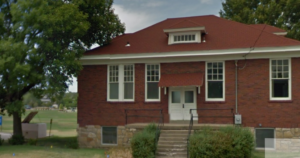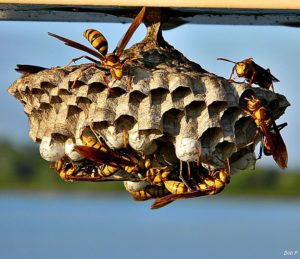It was a red brick former one-room schoolhouse, standing forlorn and isolated at the edge of a swatch of Midwestern prairie. I was similarly lonely, having just arrived in Lawrence, Kansas to take up graduate studies, with no place to live, very little money and no job to support myself.
That August was particularly hot and humid, even for a Kansas summer, quite a comedown from the Cape Cod sea breezes, salt marshes, sand dunes and ocean vistas I had left behind just as few days before. I had abandoned many friends, a developing career in marine biology and a classically quaint Cape-style cottage to pursue a different life, that of an entomologist studying bees.
It was a desolate moment, that arrival, but good fortune soon shifted my mood. Within hours I checked in at the Entomology Department, and a few minutes later the sympathetic Chair of the department had provided me with both a job and a free place to live. The job was bread-and-butter graduate student employment, working as a teaching assistant in a biology class, but the living arrangements were, well, unusual.
I headed out that afternoon to the edge of the city to take up my new residence, a former schoolhouse that had been taken over by the Entomology Department and nicknamed the bee house, a research facility used to study bees and wasps. All I had to do in return for a bed, a hot plate, a small refrigerator, worn wooden floors and blackboarded walls was inhabit the place to discourage vandals.
There were a few disadvantages the Chair hadn’t mentioned. For one, I couldn’t open the windows, in spite of the daily 100oF temperatures, because each window had a papery grey wasp nest hung on the outside, study colonies for a graduate student interested in how wasps organized their social behaviour.
(Photo by Bob Peterson, Creative Commons)
Lack of privacy was another tradeoff for no rent, with students coming in at all hours of the day and night, not only to record behaviors from the window nests but also to traipse around the basement, which was full of more wasp nests as well as colonies of halictid bees that nested in dirt.
The wasp-studying students were having an art contest, putting colored paper into plexiglass boxes for the wasps to use as building material, creating rainbow nests. The bee guys had taken a layer of dirt one bee width in diameter and sandwiched it between two sheets of plate glass, so that they could observe the bee behaviours.
Weekdays and many weekends I spent up the hill on campus, taking classes, reading journal articles, writing research proposals for funding, going to seminars and teaching undergraduate laboratories. Evenings I was alone, and after my hot plate dinners I often descended to the bee house basement for hymenopteran company, mesmerized watching the wasps build their nests of many colours and the bees bumping into each other as they navigated the tunnels they had carved into the dirt.
Graduate school is like that, lonely at first, an unbalanced full immersion experience with work predominant and social life suppressed. But as the bee and wasp nests died off and fall arrived, I physically and metaphorically opened the windows.
My evenings soon filled with friends, guitar playing, and student potluck dinners followed by dancing to country swing music at local clubs. Midnight often found us at the Rocky Horror Picture Show, and we met many a dawn at Jennings Daylight Donuts.
I also soon had a different job, a research assistantship spent looking through a microscope for hours and drawing bee mouthparts. The work provided the income I needed to go to South America for a year, to study killer bees in French Guiana for my doctoral degree.
Even while away I thought of the bee house as home, and felt cruelly uprooted when I returned to Lawrence a year later to find the schoolhouse no longer mine, taken over by the next impoverished graduate student who had arrived in my absence. Now I had to live like a regular person, renting an apartment with rooms and a real kitchen and no bees or wasps as co-tenants.
But perhaps my year in the bee house had primed me for a different way to thank about the meaning of home. A journalist asked me once to describe my first visit to a honeybee hive, and my responses was that “I opened the lid of that first hive, began pulling out combs of bees, and I felt like I was home.”
Living in the schoolhouse, I imprinted on the company of bees and wasps. Every new dwelling since has not become home until I connect with the local social insects. I’ve put a honeybee colony into the backyard, valued the wasp nest growing under the eaves, enjoyed the mating ants flying up from beneath the sidewalk or appreciated the neighborhood bees foraging on my lawn and garden.
Home is where the heart is, and my heart, still, is with the bees.
Comments welcome:

